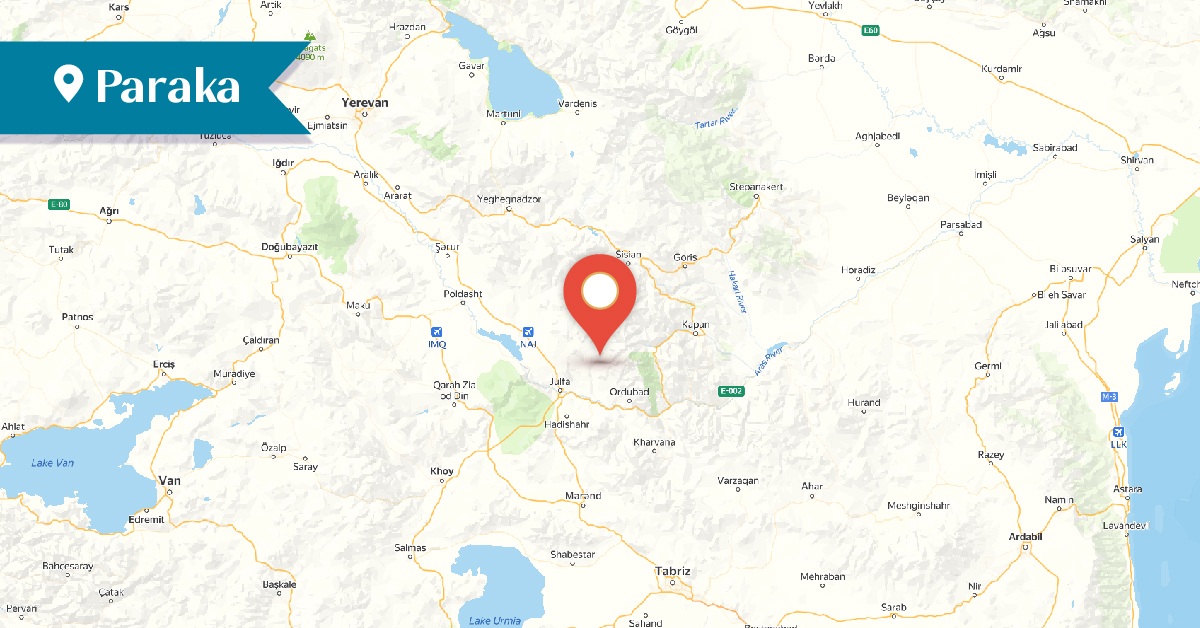2025
2025
2025-04-17

The historical Armenian village of Pharaka, located in the Goghtn province, is currently one of the settlements within the Nakhijevan Autonomous Republic. [1] In 1989, the village was deprived of its Armenian population due to forced deportation.
There are several hypotheses regarding the origin and meaning of the name Pharaka. According to one version, the name is linked to Pharnak, the principal moon deity worshiped by the Armenians. [2] G. Abgaryan associates the name Paraka with the location called "Pharakan of Shemaka," mentioned by the historian Sebeos, suggesting that the name derives from the word Pharakan, meaning "hunting dog." [3]
Although these explanations are not complete, they provide unequivocal evidence that the founders and inhabitants of the village were Armenians. This settlement was not only known for its natural beauty—surrounded by high mountain peaks and green gorges—but also served as a cradle of Armenian material culture, with ample evidence such as churches, numerous manuscripts written and copied here[4], Armenian-inscribed tombstones, khachkars (cross-stones), and more. Most of these relics date from the 14th to 18th centuries, when several churches operated in the area: the Dzoro Monastery of Pharaka with its St. Gevorg Church, as well as St. Nshan, St. Shmavon, St. Eghia the Prophet, St. Hakob, and St. Stepanos. Most of these churches are now in ruins.
To the north of Pharaka, on a high plateau, there was a large cemetery with over 800 tombstones and khachkars with Armenian inscriptions dating from the 13th to 19th centuries. Remnants of a bridge built from finely cut and semi-worked basalt blocks have also been preserved here. According to Argam Ayvazyan, the bridge was constructed in the 17th century. An Armenian inscription above the entrance of a caravanserai built in 1702 also provides testimony about its origins.[5]
This Armenian cultural heritage has been destroyed by the Azerbaijani authorities and the current residents of the village, whose population now numbers around 300–400. The authorities of Azerbaijan regard the majority of these residents as “Azerbaijanis displaced from Armenia,” who are “waiting” to return.
It is evident, however, that before the settlement of this newcomer population, the main inhabitants of Pharaka were Armenians, who were forcibly displaced by Azerbaijani authorities.
[1] Currently, it is the settlement of Parağa kənd in the Nakhichevan Autonomous Republic.
[2] S. Umaryan, Syunik: A Pantheon, Yerevan, 1981, p. 45.
[3] G. Abgaryan, The History of Sebeos and the Mystery of the Anonymous, 1965, p. 116.
[4] Some of the manuscripts are preserved at the Matenadaran in Yerevan.
[5] Argam Ayvazyan, The Epigraphic Heritage of Nakhijevan, Vol. III, Goghtn District, 2007, p. 22.